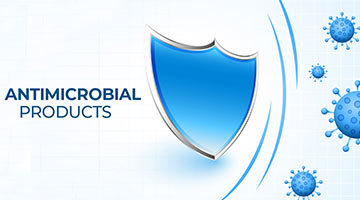Don't wanna be here? Send us removal request.
Text
Silver Ion (Ag⁺): Potent Antifungal Action
Silver ions (Ag⁺) are renowned for their broad-spectrum antimicrobial properties. They disrupt fungal cell respiration and reproduction by binding to proteins and nucleic acids, effectively killing fungi and preventing their growth.
0 notes
Text
How Antimicrobial Compounds Are Transforming the Packaging Industry
In today’s fast-paced world, where convenience and safety are paramount, the packaging industry has evolved to meet the growing demands of consumers and businesses alike. One of the most significant innovations driving this evolution is the use of antimicrobial compounds in packaging materials. These compounds are revolutionizing the way products are stored, transported, and ultimately delivered to consumers, ensuring that goods remain safe, fresh, and free from harmful microorganisms.

Understanding Antimicrobial Compounds
Antimicrobial compounds are substances designed to inhibit the growth of microorganisms, including bacteria, viruses, fungi, and mold. These compounds can be integrated into various materials, making them ideal for use in packaging where hygiene and safety are critical. By incorporating antimicrobial agents into packaging, manufacturers can reduce the risk of contamination, extend the shelf life of products, and ensure that goods remain safe for consumption or use.
The Growing Importance of Food Safety
One of the primary areas where Antimicrobial compounds are making a significant impact is in food packaging. With the global food supply chain becoming increasingly complex, ensuring that food products reach consumers in a safe condition is more challenging than ever. Contamination can occur at any point along the supply chain, leading to foodborne illnesses and significant economic losses for businesses.
Antimicrobial packaging helps mitigate these risks by actively preventing the growth of harmful bacteria and pathogens on the surface of the packaging. This is particularly important for perishable items such as meat, dairy products, and fresh produce, which are more susceptible to microbial contamination. By using antimicrobial compounds, packaging manufacturers can help keep food products fresher for longer, reducing waste and ensuring that consumers receive high-quality goods.
Extending Shelf Life and Reducing Waste
In addition to enhancing food safety, antimicrobial packaging plays a crucial role in extending the shelf life of various products. This is especially important in an era where reducing food waste is a global priority. According to the Food and Agriculture Organization (FAO), approximately one-third of all food produced for human consumption is wasted each year, much of it due to spoilage.
By integrating antimicrobial compounds into packaging materials, manufacturers can slow down the spoilage process, allowing products to remain on shelves for longer periods. This not only benefits consumers by providing them with fresher products but also helps retailers and producers minimize waste and maximize profits. In a world where sustainability is becoming increasingly important, antimicrobial packaging offers a practical solution to one of the most pressing challenges facing the food industry today.
Applications Beyond Food Packaging
While food packaging is a significant area of focus, the benefits of antimicrobial compounds extend far beyond the food industry. These compounds are being used in a wide range of packaging applications, including pharmaceuticals, cosmetics, and medical devices. In the pharmaceutical industry, for example, antimicrobial packaging helps protect medications from contamination, ensuring their efficacy and safety.
In the cosmetics industry, antimicrobial packaging is used to prevent the growth of bacteria and mold in products such as lotions, creams, and makeup. This is particularly important for products that are used directly on the skin, as contamination can lead to infections and other health issues. By using antimicrobial compounds, cosmetic manufacturers can offer products that are safer and have a longer shelf life, providing consumers with greater peace of mind.
Meeting Consumer Expectations
As consumers become more informed and health-conscious, their expectations for product safety and quality continue to rise. This is driving demand for packaging solutions that not only protect the contents but also contribute to overall product quality. Antimicrobial packaging meets these expectations by providing an added layer of protection against contamination, ensuring that products remain safe and effective throughout their lifecycle. Moreover, antimicrobial packaging aligns with the growing trend towards sustainability. By extending the shelf life of products and reducing waste, these packaging solutions support efforts to create a more sustainable and efficient supply chain. As businesses and consumers alike seek to minimize their environmental impact, antimicrobial packaging is poised to play a critical role in the future of the packaging industry.
#antimicrobialcompounds#antimicrobialproducts#antibacterialcompound#antibacterialproduct#compoundantibiotics
0 notes